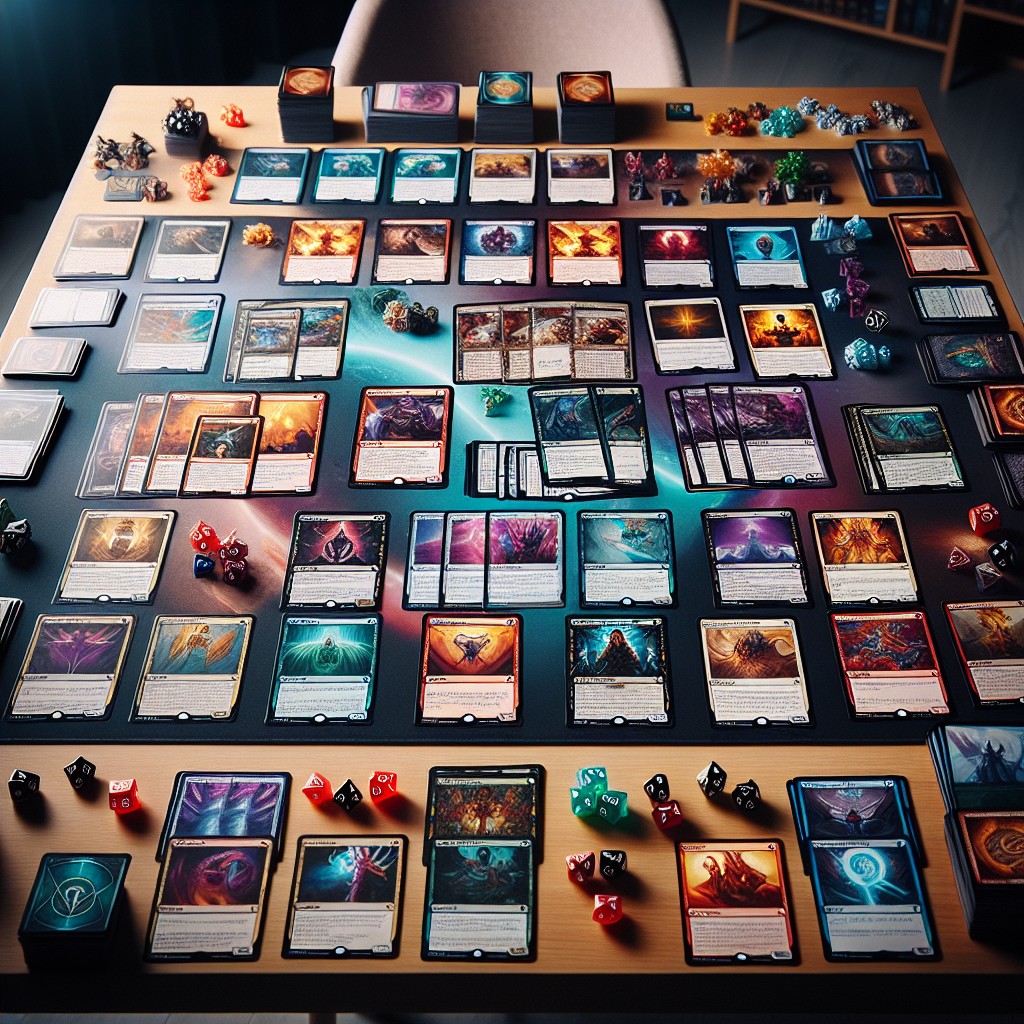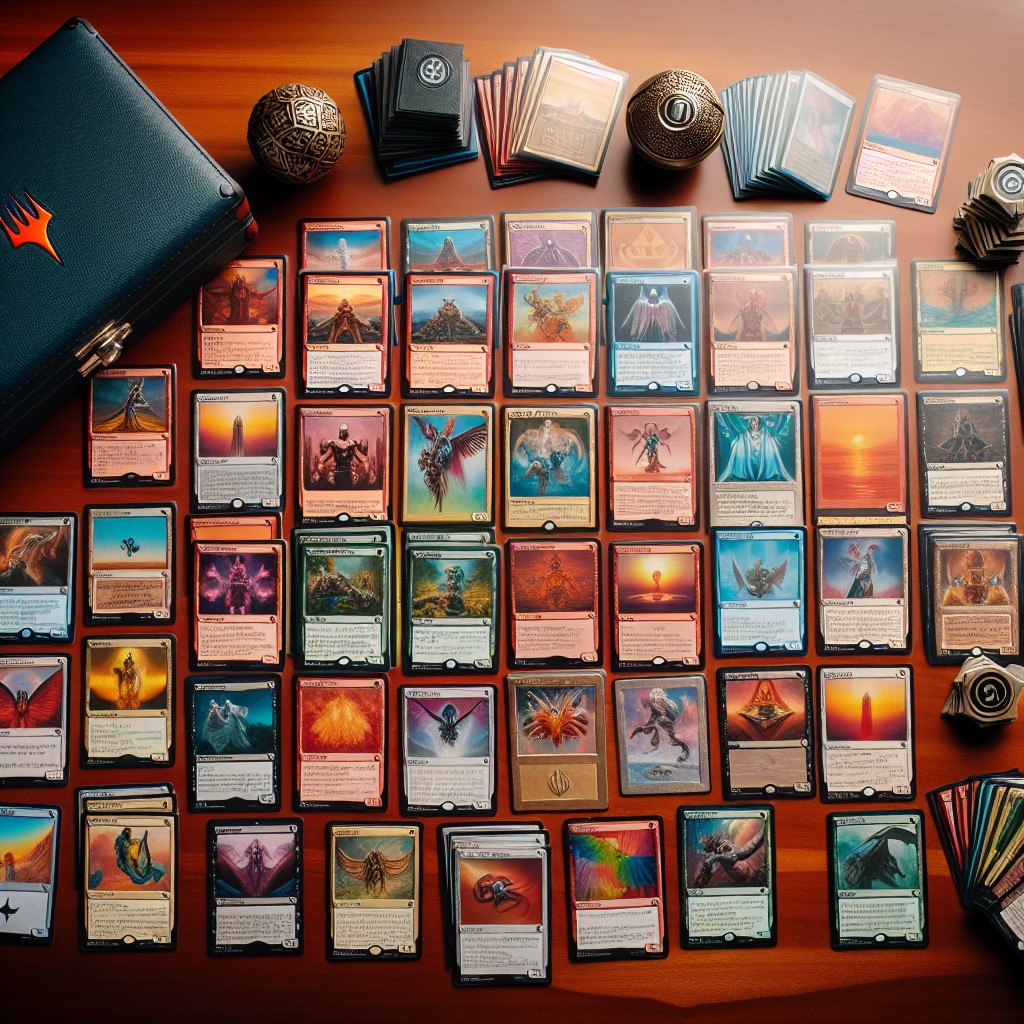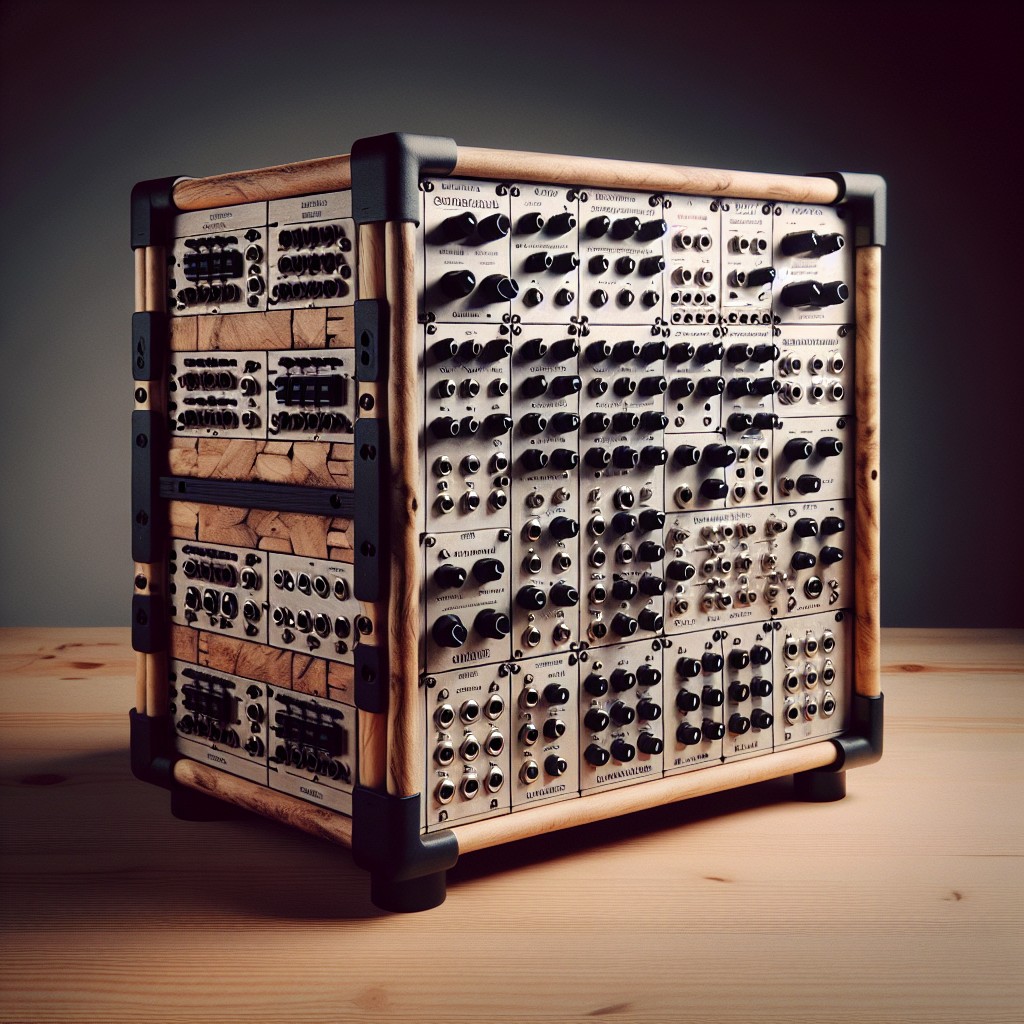Last updated on
Exploring the world of Magic: The Gathering becomes incredibly exciting because this article unfolds the secrets behind finding high performance, yet cheap, Legacy decks.
Key takeaways:
- Legacy format: vast card pool, extensive metagame
- Key components: efficient mana bases, format staples, combos
- Determine your budget: assess upfront allocation, consider incremental costs
- Affordable deck strategies: prioritize synergy, solid mana base, linear strategy
- Tribal decks: Merfolk, Slivers, Humans, Goblins offer thematic and competitive options.
Understanding the Legacy Format

The Legacy format boasts a vast card pool spanning Magic: The Gathering’s history, excluding most banned cards for balance. Deck builders can dive into decades of sets, harnessing powerful synergies and strategies. This format is non-rotating, ensuring that a deck remains playable indefinitely, barring any bans.
Players find appeal in the format’s depth and extensive metagame, where classic and new-school cards combine to form competitive decks. An understanding of Legacy is crucial as it requires knowledge of a wide array of cards and interactions, many with complex mechanics. The format rewards extensive knowledge of potential matchups and the ability to anticipate an opponent’s strategy.
Due to the extensive card pool and the power level of decks, it is typically more expensive than other formats—though cost-effective options exist for players willing to explore budget-friendly decks.
Key Components of Legacy Decks

Legacy decks often hinge on powerful, non-rotating cards that define the format’s high-octane play style. Central to these decks are the efficient mana bases, typically consisting of original dual lands like Underground Sea or Volcanic Island, which are bolstered by fetch lands such as Flooded Strand to ensure consistency. Given these lands’ prohibitive costs, budget alternatives like pain lands or check lands can be viable substitutes.
Another cornerstone of Legacy is the use of format staples for control, such as Force of Will and Brainstorm, which allow for strategic play and resilience against opponents. Cards that exploit the graveyard, like Life from the Loam or Entomb, also feature prominently. These strategies are powerful but can be emulated with less expensive options, like replacing Force of Will with Daze or Misdirection.
Combos and synergies play a pivotal role, and many decks are built around them. The presence of diverse and powerful combos requires you to include disruption in your deck, preferably in the form of counterspells or targeted discard effects like Thoughtseize, again considering budget-friendly alternatives.
To round out a Legacy deck, efficient creatures and spells that offer high impact for lower costs, such as Delver of Secrets or Tarmogoyf, can be keys to victory. More affordable creatures with similar aggressive strategies, like Gurmag Angler or Monastery Swiftspear, can be just as impactful in the right build.
Determining Your Budget for Legacy Decks
Navigating the financial waters of Legacy can seem daunting at first glance, owing to the inclusion of powerful, often pricey, cards. However, determining your budget shouldn’t deter your aspirations of participating in this dynamic format. Prioritize your monetary comfort zone while considering the initial investment and ongoing updates.
Start by assessing how much you’re willing to allocate upfront. Legacy decks can vary widely in cost, with some options available for under $100.00, so pick a ceiling that won’t break the bank. Keep in mind the deck’s core cards, which are often the priciest components, and target decks where these essentials are more affordable.
Remember to factor in the incremental costs; “budget” doesn’t mean stagnant. Part of the beauty of Legacy is the adaptability of decks over time. As you invest more into the game, upgrading with pricier staples gradually is a strategic approach that spreads out expenses.
Lastly, trading and borrowing within your community can be a boon for budget-minded players. Engaging with fellow enthusiasts not only enriches your experience but also provides opportunities to access cards that might otherwise be prohibitive.
Respecting these guiding points ensures you can step onto the battlefield without the encumbrance of financial strain, allowing the focus to remain on strategic play and enjoyment of the game.
Burn/Prowess ($75.00 to $200.00)
Outshining with efficiency, Burn/Prowess maximizes on cheap, direct damage spells such as Lightning Bolt and Fireblast, paired with cost-effective creatures like Monastery Swiftspear and Eidolon of the Great Revel.
The deck’s game plan? Deal as much damage as quickly as possible. This approach allows for the inclusion of budget-friendly, yet highly effective cards that work synergistically to whittle down the opponent’s life total in a flash.
Keeping the mana curve low is key, with the majority of spells costing one or two mana, ensuring a smooth and aggressive play style. Sideboard options such as Smash to Smithereens offer inexpensive ways to tackle specific matchup challenges without heavily investing in rare cards.
The dynamic nature of Burn/Prowess provides a welcome entry point into Legacy, allowing players to experience the format’s speed and complexity while being mindful of budget constraints.
Manaless Dredge (Just Over $100.00)
Diving into Manaless Dredge, a deck that circumvents the traditional need for mana, enables explosive plays from the graveyard. Without relying on lands for mana, this strategy might seem counterintuitive at first, but it leverages the power of cards like ‘‘Balustrade Spy’ and ‘‘Narcomoeba’ paired with ‘‘Dread Return’ to put a significant number of creatures into play quickly and overwhelm opponents.
This approach focuses on the mechanic “dredge,” utilizing cards like ‘‘Golgari Grave-Troll’ to replace regular draws and fill the graveyard with impactful creatures and spells. Key to this style are cards such as ‘‘Bridge from Below’ which can create zombie tokens as creatures die, or ‘‘Cabal Therapy’ for targeted discard that disrupts opponents while advancing your board state.
Although vulnerable to graveyard hate, this deck often catches opponents off-guard and can claim games before they have a chance to respond. With most of the deck’s cards needing only a modest investment, tweaking and honing Manaless Dredge can be a fun and rewarding journey for those intrigued by an unconventional play style.
Mono-Black Reanimator ($307)
The Mono-Black Reanimator is a deck that thrives on a straightforward yet powerful concept—resurrecting potent creatures from the graveyard directly onto the battlefield early in the game. This cost-effective strategy avoids the hefty price tag of dual lands by operating on a single color.
Key cards, like ‘Entomb’ paired with ‘Reanimate’ or ‘Exhume,’ enable you to put high-impact creatures in play, often on the first few turns. ‘Griselbrand’ and ‘Chancellor of the Annex’ are common targets, given their game-altering abilities. The deck’s relative resilience comes from discard spells like ‘Thoughtseize’ that protect your game plan while disrupting the opponent’s.
Sideboard options introduce tools to counter graveyard hate, which is vital since post-board games typically involve opponents trying to thwart your strategy with cards like ‘Rest in Peace’ or ‘Leyline of the Void. Consider ‘Pack Rat’ as a plan B, providing an alternate win condition that doesn’t rely on the graveyard.
By focusing on a single color and a clear goal, you can pilot Mono-Black Reanimator effectively without breaking the bank, all while experiencing the thrill of playing Legacy’s powerful spells and creatures.
Affordable Deck Strategies
When exploring cost-effective strategies for Legacy deck-building, it pays to consider a few key concepts.
1. Prioritize Synergy Over High-Cost Cards: Look for card interactions that can win games without the need for expensive staples. A well-synchronized deck can often outperform a collection of high-priced singles.
2. Choose a Solid Mana Base: Investing in a reliable, budget-friendly mana base is crucial. Dual lands can be replaced with pain lands, check lands, or other more affordable options to ensure a smooth play without breaking the bank.
3. Embrace a Linear Strategy: Linear decks that focus on a single, powerful game plan can be effective and less costly. Without the need for a wide range of answers or threats, you streamline your deck and your expenses.
4. Investigate Lesser-Known Archetypes: Some competitive decks fall under the radar and can be built inexpensively. Keep an eye on tournament results for emerging decks that haven’t spiked in price yet.
5. Utilize Sideboard Creatively: Your sideboard can be a budget-friendly way to counter popular meta decks. Efficient and inexpensive sideboard cards can give you an edge against more expensive decks.
By applying these principles, you can construct a Legacy deck that’s both affordable and competitive. With smart choices and a focus on synergy, your deck can stand up to the vast array of strategies found in this diverse format.
Tribal Decks (Merfolk, Slivers, Humans and Goblins) ($1,100 to $1,900)
When diving into the Tribal decks of the Legacy format, players can experience both a thematic and competitive edge. These decks, while not the absolute cheapest, offer a solid foundation for those looking to make a meaningful entry into Legacy play.
Merfolk leverages a synergy-based strategy, utilizing lords like ‘Lord of Atlantis’ to boost your aquatic army while disrupting opponents with cards like ‘Force of Will’. Slivers, on the other hand, form a relentless hive, each creature amplifying others, creating a board state that can quickly become overwhelming with cards such as ‘Crystalline Sliver’ providing essential protection.
Humans is another versatile contender, highly adaptable and capable of explosive starts; ‘Thalia, Guardian of Thraben’ exemplifies the sort of disruption and board control this deck excels at. Lastly, Goblins brings a more chaotic approach, with cheap, aggressive creatures like ‘Goblin Lackey’ enabling the deployment of high-impact cards like ‘Goblin Ringleader’ early in the game.
These decks can be tailored with a mix of staple and non-reserve list cards to moderate initial investment, each offering an expandable platform that can evolve over time as you acquire more Legacy staples. The key is to start with a core of affordable, effective creatures and spells, then grow your deck’s power as your budget allows.
Building On a Budget: Tips and Tricks
To maximize the value of your investment in a Legacy deck, consider these cost-effective strategies:
- Start with a Core: Focus on acquiring a solid foundation of lands and versatile spells that are common in many budget-friendly lists. This enables a smooth pivot between decks with minimal additional expense.
- Track Price Fluctuations: Use online tools to monitor card prices for potential deals. Timing purchases when the market dips can lead to significant savings.
- Proxy Playtesting: Before committing to a purchase, use proxies to test different decks. This ensures your comfort and satisfaction with the deck’s playstyle and performance.
- Trading: Engage with your local community or online trading platforms to exchange cards you don’t need for those that are essential to your deck.
- Condition Matters: Slightly played or even moderately played cards can function the same as near-mint ones in gameplay. They often come at a fraction of the cost.
- Incremental Upgrades: Instead of a full deck overhaul, gradually improve your deck by acquiring high-impact cards over time as your budget allows.
By employing these methods, you can enjoy the competitive Legacy scene without breaking the bank.
Maintaining and Upgrading Your Legacy Deck
Keep an eye on the metagame. Legacy evolves, and with it, card values and deck effectiveness can shift. Regularly check in on recent tournament results and discussions in the Legacy community to stay informed.
Prioritize key upgrades. Identify which cards will most significantly boost your deck’s performance and save towards them. Focus on versatility to ensure new purchases can be used in multiple deck configurations.
Trade smartly. Use trading platforms and local community groups to trade cards you don’t need for those that fit into your deck. It maximizes your existing resources without spending more.
Sleeve and store correctly. Protect your investment with quality sleeves and a secure storage box. This preserves card condition and value over time, important for both play and future trade opportunities.
Practice patience. Building and refining a Legacy deck is a journey. Enjoy the process of tweaking your deck, and don’t feel pressured to immediately procure all the expensive staples.
Recap




